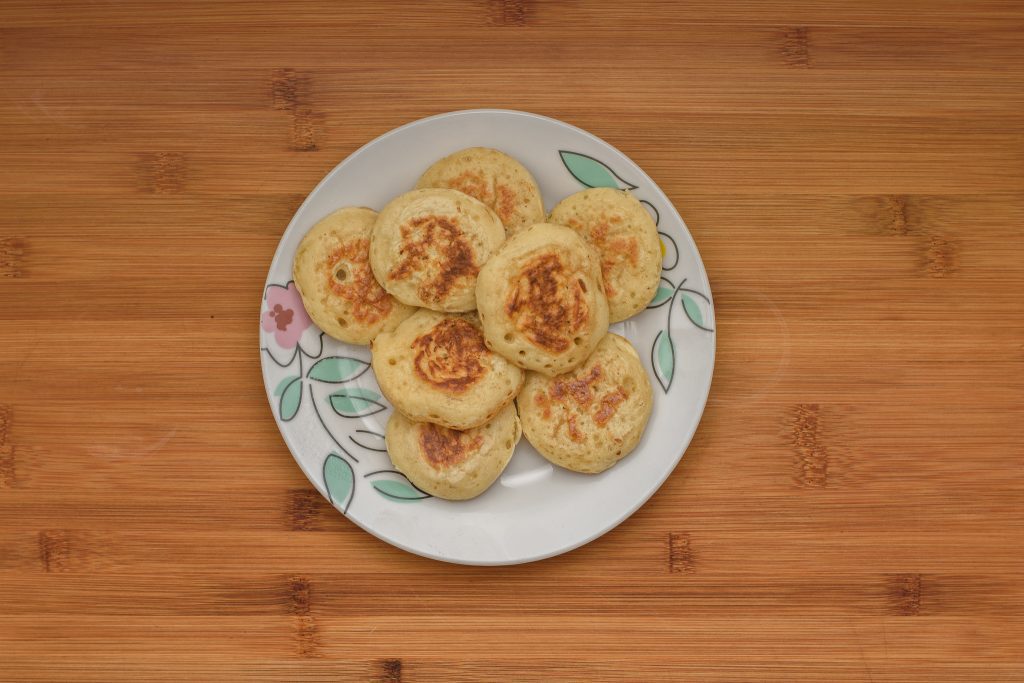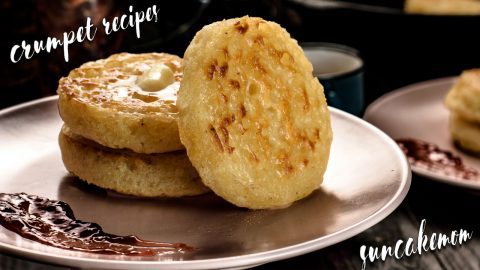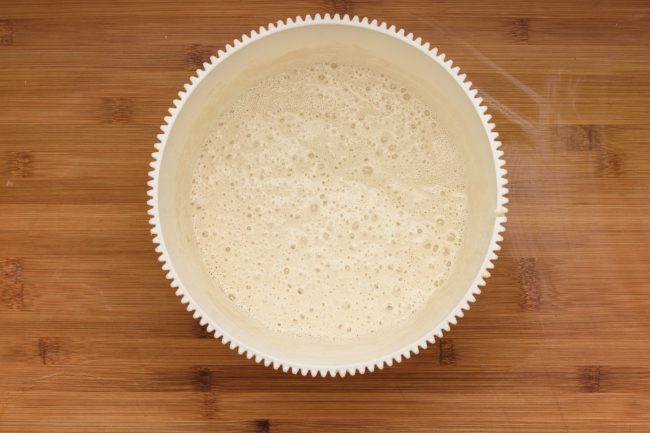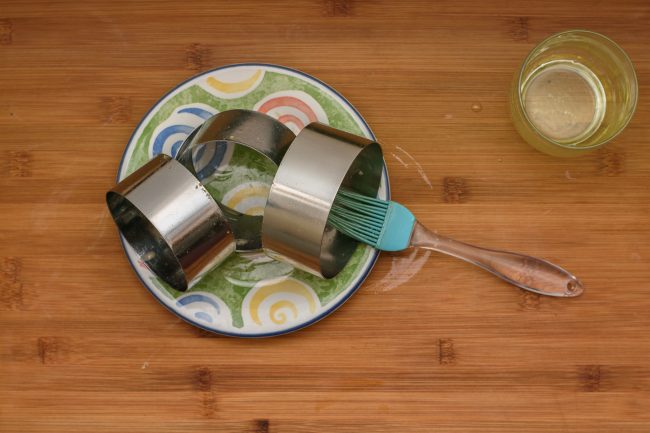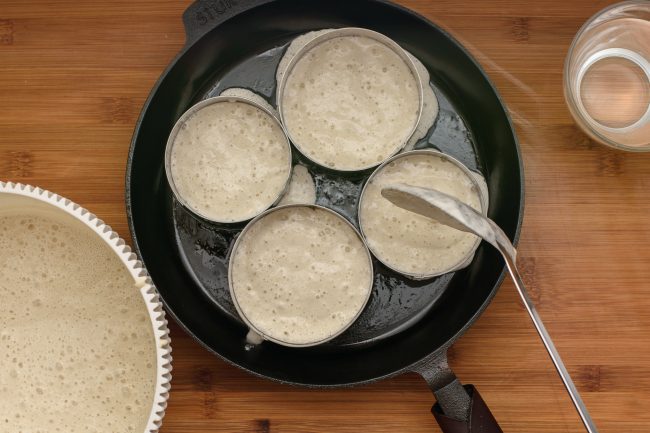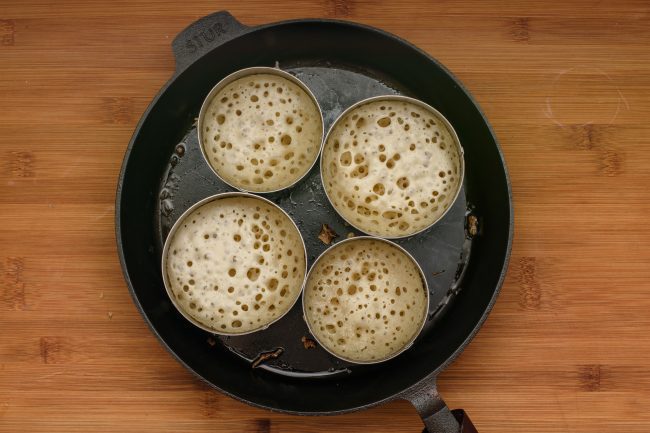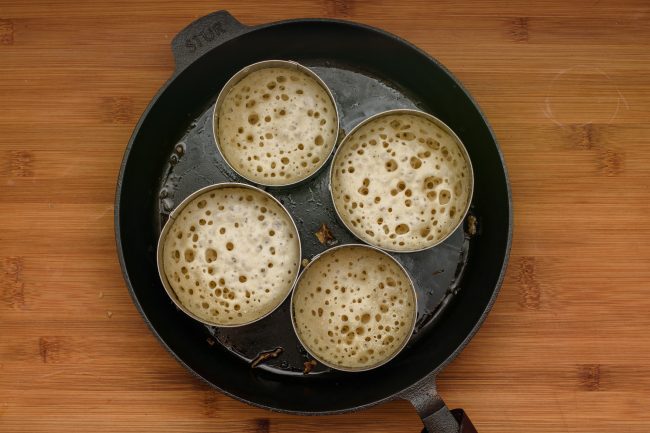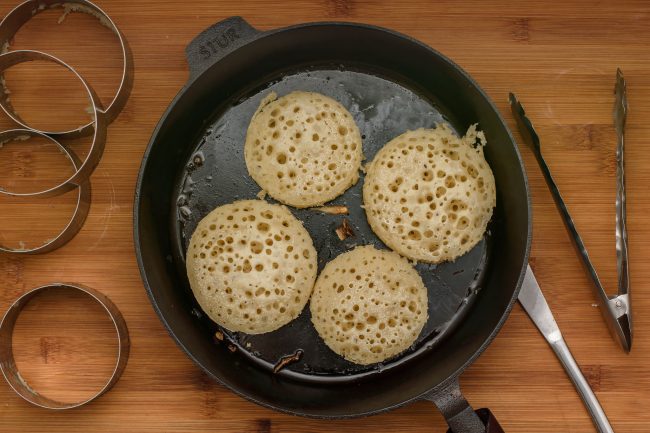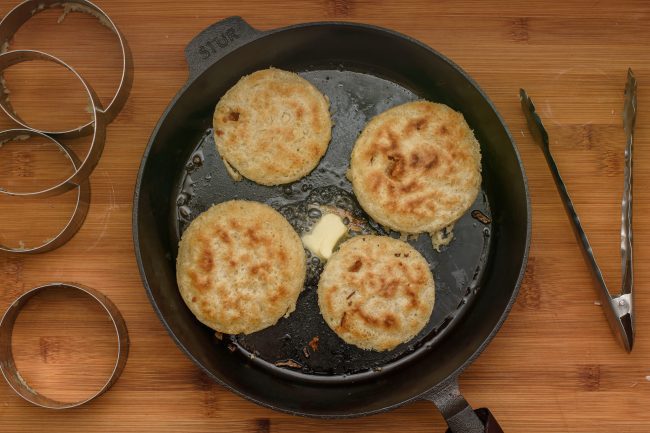Looking for the best crumpet recipe or a long lost one? Just take a leap of faith to try two of the best ones!
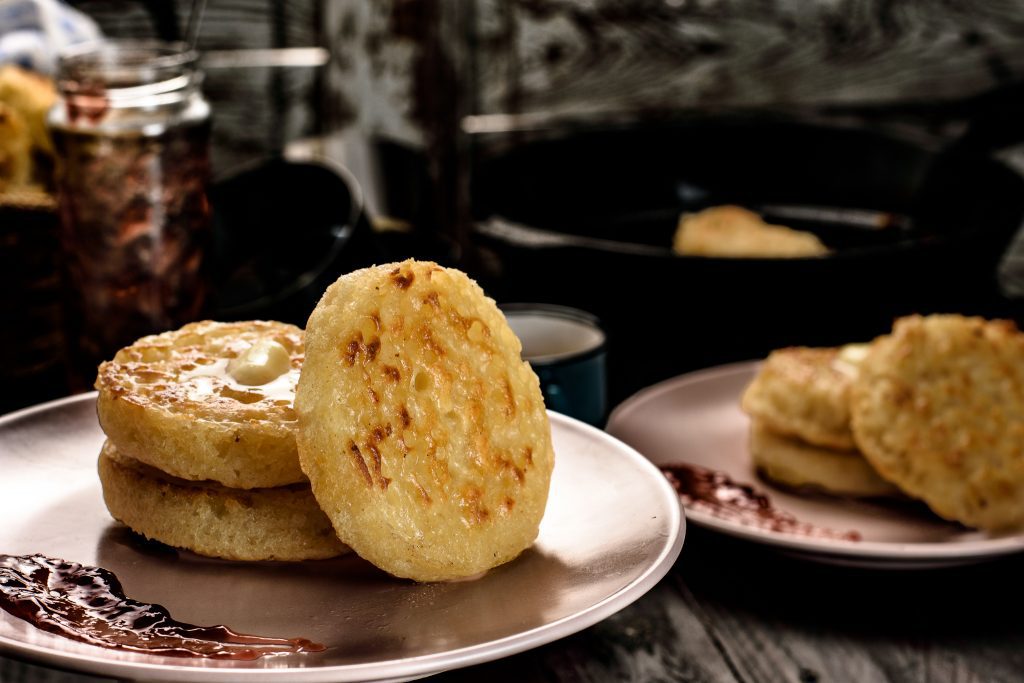
Crumpet’s recipes were wide and many, until commercial food production introduced their ideas of crumpets. Since then, most crumpets are made equal, except, of course, in the confines of the dark corners of our kitchens where we can still make them whatever way we like.
Sure, if we got used to the crumpets sold by shops all around then the experimentation will not be about finding the best crumpet but to make the ones we got used to.
Luckily, the Warburton’s recipe (it’s a British baking firm for those in the unknown) of true shop sold crumpets are revealed for those who can’t get them anymore, yet can’t live without them. To get the exact same, a bit rubbery textured, yet holey crumpets, we only need to follow the recipe to the letter, especially when it’s calling for water.
As mentioned before, since crumpets history is rather obscure, so are their regional recipes which sometimes call for buttermilk and baking soda as their rising agent while others substituted water with milk.
Forget to put on the rings, as it was done before industrialized manufacturing processes made cheap metal rings an everyday item, and we got a take on crumpets that look rather like pancakes. (Yes, we can make pancakes into crumpets using crumpet rings.)
If we throw some bacon rendered fat instead of butter or any other cooking oil into the mix, we’ll have more than marginally different take on the resulting crumpets that many of us want to imagine for their breakfast.
Yet, if we believe in them, crumpets can be so much more than just holey bread baked on the griddle.
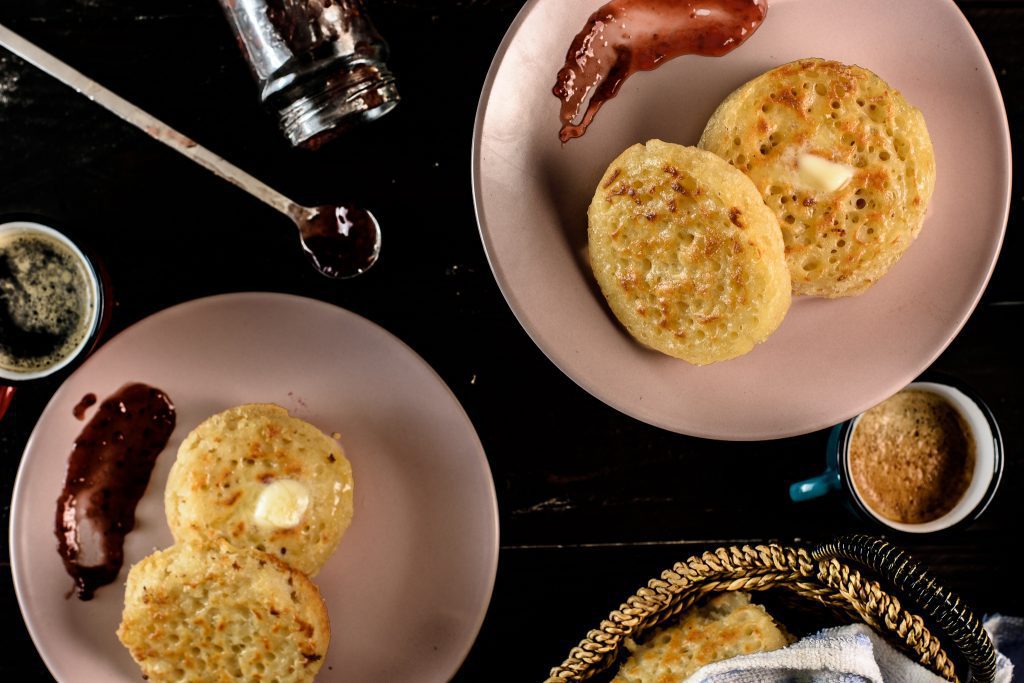
Ingredients
Holey crumpets
- 1¼ cup / 150g Plain white flour
- ⅞ cup / 200ml Water
- ½ teaspoon / 3g Salt
- 1 teaspoon / 6g Baking powder
- 1 teaspoon / 2.5g Dried yeast
Tasty crumpets
- 1¼ cup / 150g Plain white flour
- ⅞ cup / 200ml Water
- ½ teaspoon / 3g Salt
- 1 teaspoon / 6g Baking soda
- 1 teaspoon / 2.5g Dried yeast
Kitchen utensils
- Crumpet rings
How to make crumpets
- Mix, flour, water, salt, baking powder, and yeast in a big bowl until uniform mixture. Cover the bowl and place it to a 68°F – 81°F /20°C – 27°C corner for at least half an hour to rise.

- Heat a frying pan and rings to medium – low. Grease the crumpet rings with cooking oil or butter. We can use any metal ring here, some have success with rings made out of tuna tins so don’t invest in crumpet rings before falling in love with them.

- Drop some batter in, about halfway to the rings. It’s crucial to have the rings hot enough before spooning the batter in otherwise some batter may escape or badly sticks to the rings.

- Let them bake slowly. About half way through of our 20 minutes journey, the holes start to appear and continue to populate the surface of our holey crumpet. We can turn the heat up a bit to bring the cooking time down but that needs a bit of experimenting with our particular cookware and cooktop.
 Don’t expect anything from the tasty one though and bless every one that cherish the light of the kitchen.
Don’t expect anything from the tasty one though and bless every one that cherish the light of the kitchen.
- If we make more than one crumpet then mostly likely we’ll see that the outer rims of the crumpets aren’t baking as well as the inner sides. Rotate the crumpets for even baking and use the opportunity to check the done-ness of their bottom. If the bottom is scorched or burnt then turn the heat down for the next batch.

- Once the top solidifies which will be indicated by color change too, remove the rings. They are hot and probably somewhat sticky too so we may need some additional tools.

- Flip the freed crumpets, add some butter and toast them until golden brown.
 Remove any residue from the crumpet ring before using it for the next batch and don’t be sad for the missing holes, it could be worse.
Remove any residue from the crumpet ring before using it for the next batch and don’t be sad for the missing holes, it could be worse.
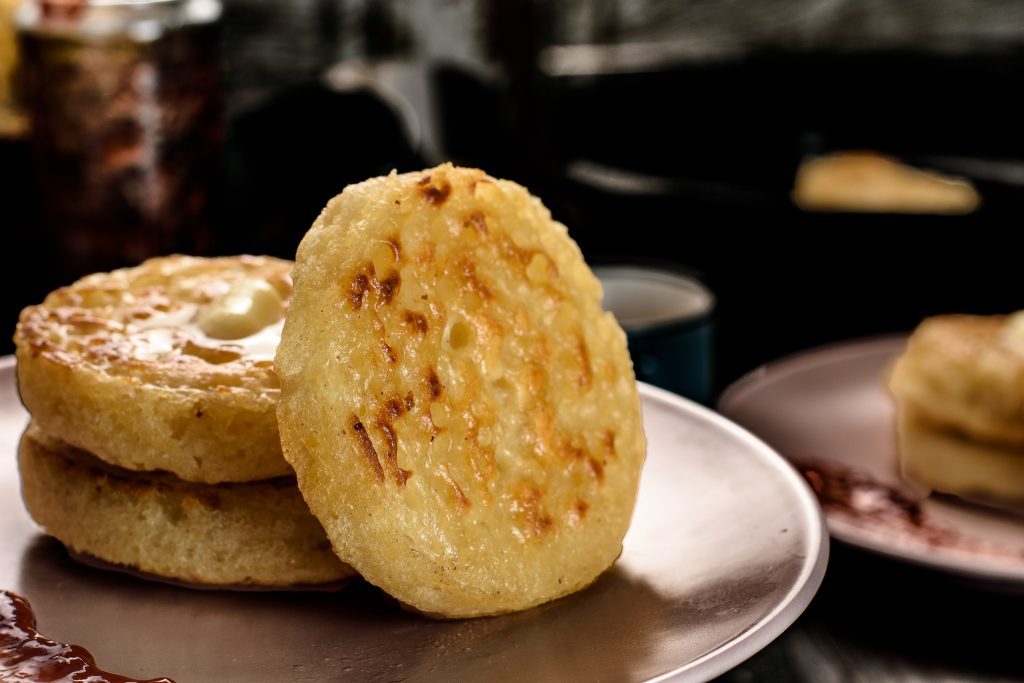
Enjoy!
Crumpet Recipes
Equipment
- Crumpet ring
Ingredients
Holey crumpets
- 1¼ cup Plain white flour
- ⅞ cup Water
- ½ teaspoon Salt
- 1 teaspoon Baking powder
- 1 teaspoon Dried yeast
Tasty crumpets
- 1¼ cup Plain white flour
- ⅞ cup Water
- ½ teaspoon Salt
- 1 teaspoon Baking soda
- 1 teaspoon Dried yeast
Instructions
- Mix, flour, water, salt, baking powder, and yeast in a big bowl until uniform mixture. Cover the bowl and place it to a 68°F – 81°F /20°C – 27°C corner for at least half an hour to rise.

- Heat a frying pan and rings to medium – low. Grease the crumpet rings with cooking oil or butter. We can use any metal ring here, some have success with rings made out of tuna tins so don't invest in crumpet rings before falling in love with them.

- Drop some batter in, about halfway to the rings. Mind to have the rings hot enough before spooning the batter in otherwise some batter may escape.

- Let them bake slowly. About half way through of our 20 minutes journey, the holes start to appear and continue to populate the surface of our holey crumpet. Don’t expect anything from the tasty one though and bless every one that cherish the light of the kitchen.

- If we make more than one crumpet then mostly likely we’ll see that the outer rims of the crumpets aren’t baking as well as the inner sides. Rotate the crumpets for even baking and use the opportunity to check the done-ness of their bottom. If the bottom is scorched or burnt then turn the heat down for the next batch.

- Once the top solidifies which will be indicated by color change too, remove the rings. They are hot and probably somewhat sticky too so we may need some additional tools.

- Flip the freed crumpets, add some butter and toast them until golden brown. Remove any residue from the crumpet ring before using it for the next batch and don’t be sad for the missing holes, it could be worse.

Notes
Holey Crumpet
Nutrition
Pin now, Enjoy later!
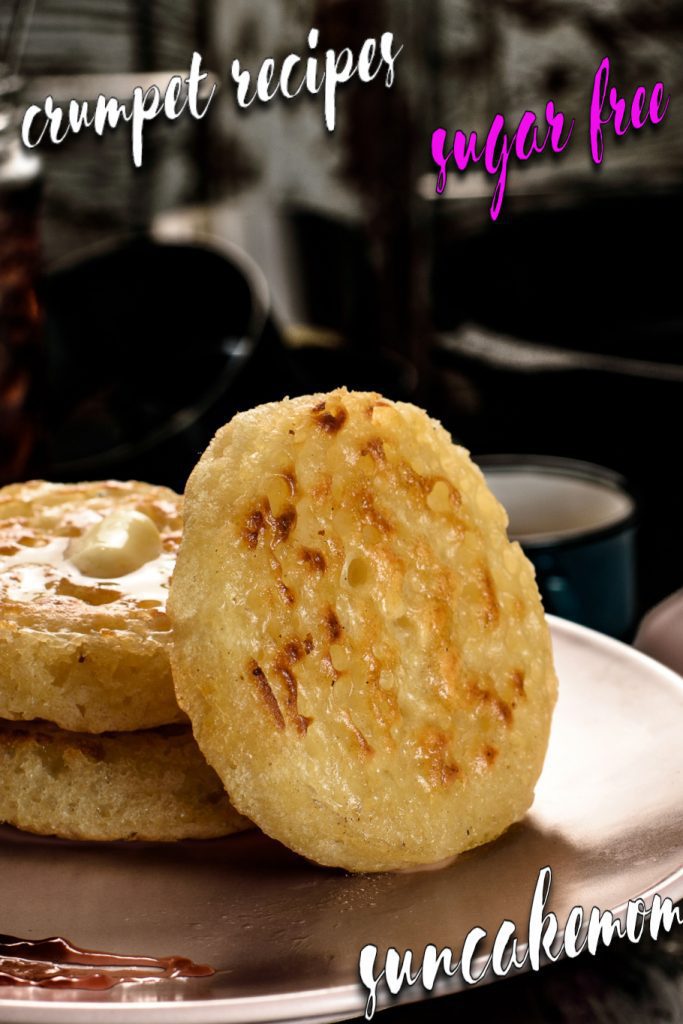
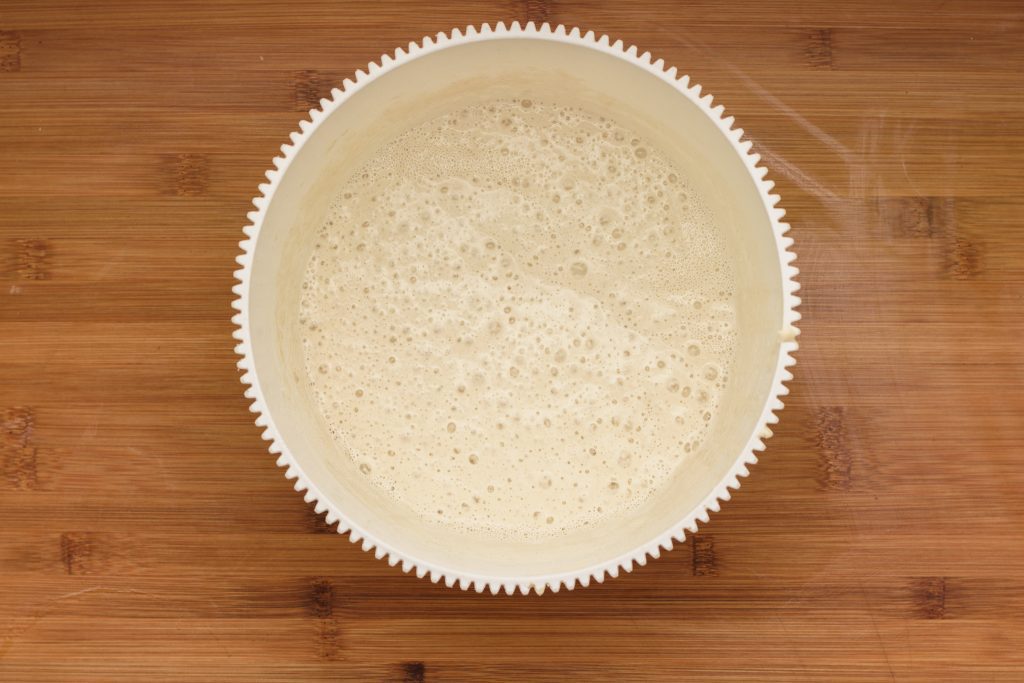
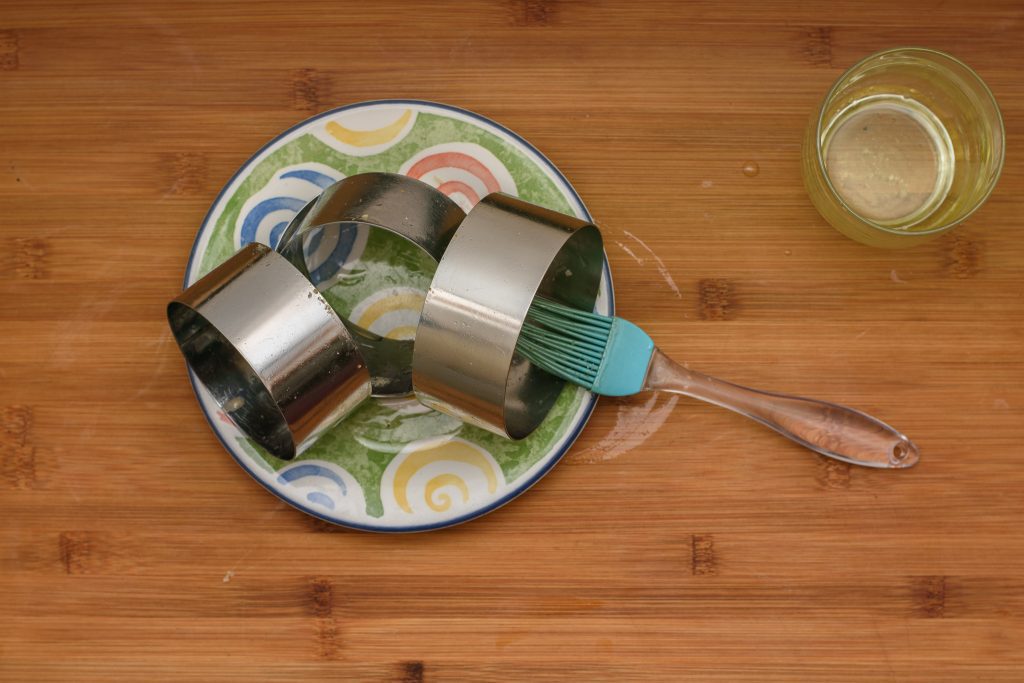
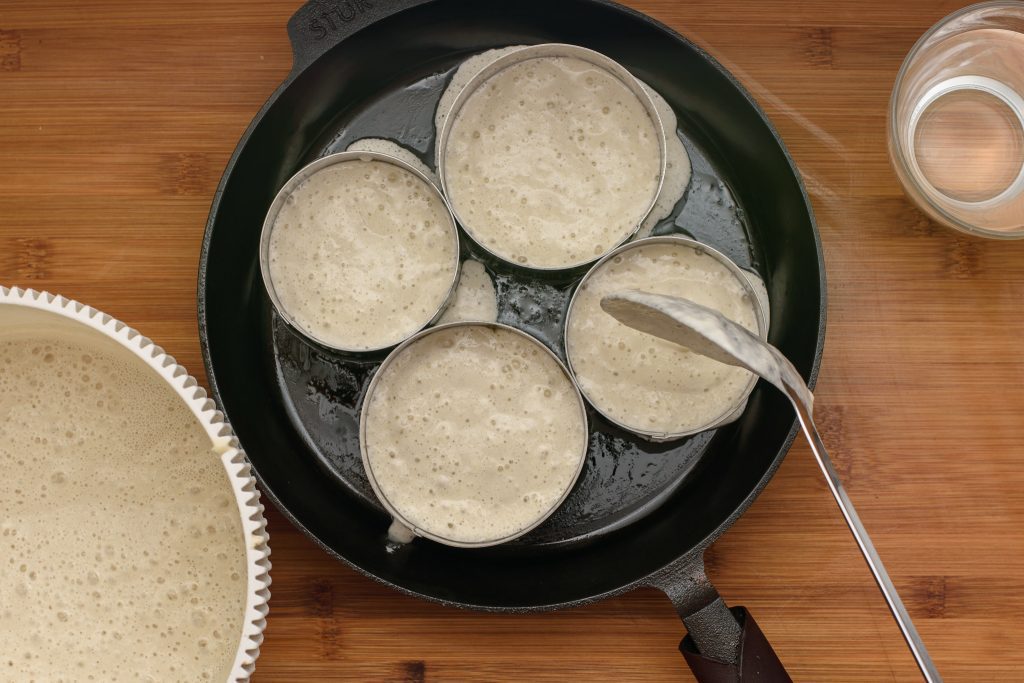
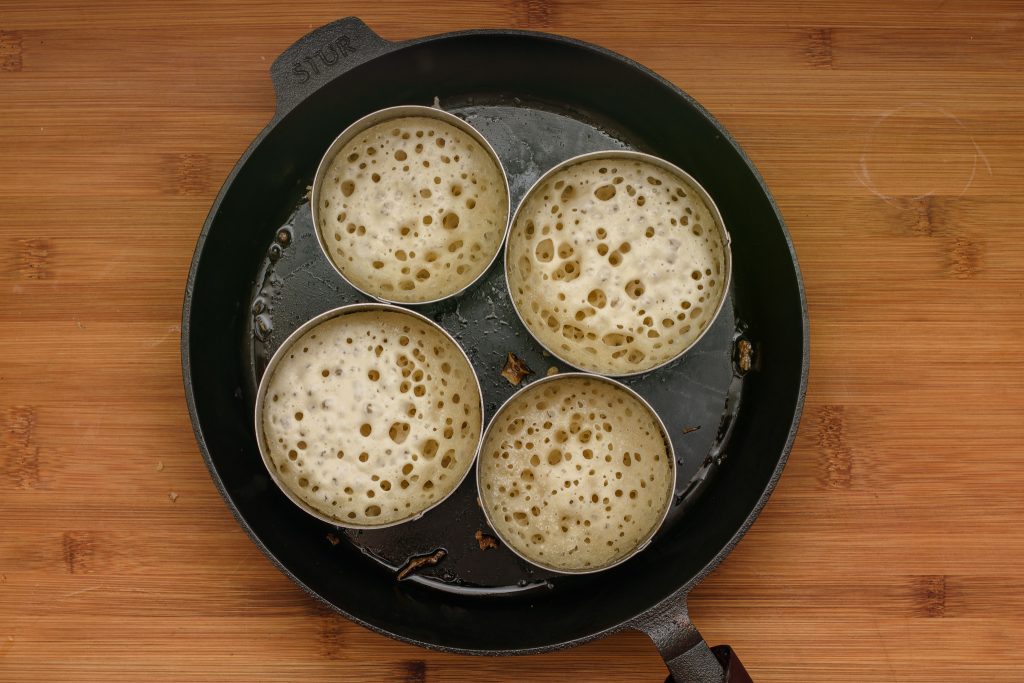 Don’t expect anything from the tasty one though and bless every one that cherish the light of the kitchen.
Don’t expect anything from the tasty one though and bless every one that cherish the light of the kitchen.


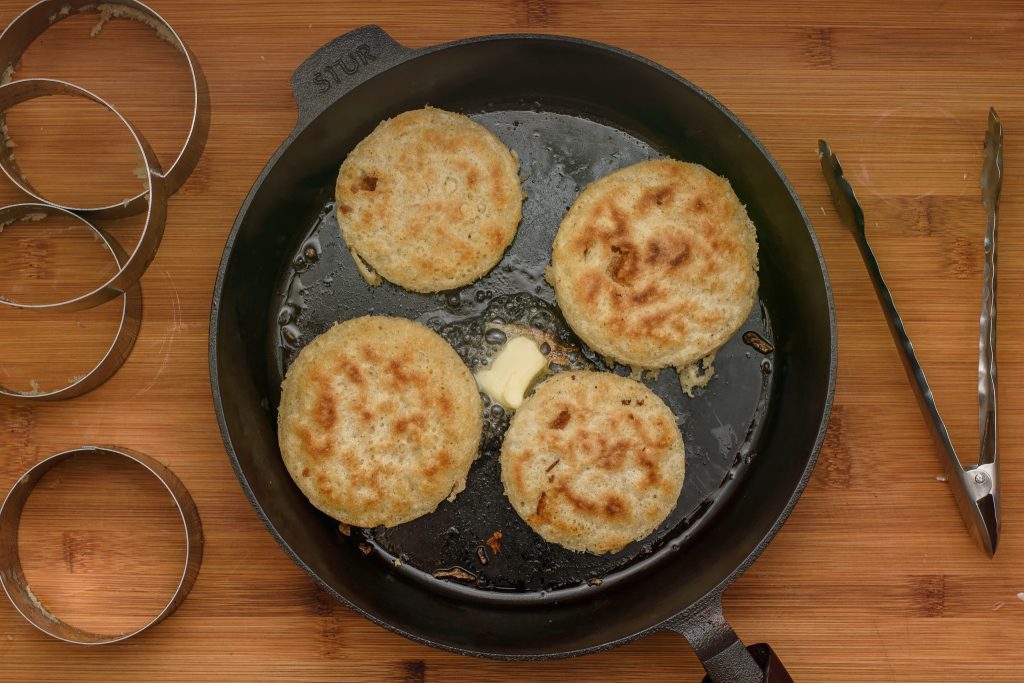 Remove any residue from the crumpet ring before using it for the next batch and don’t be sad for the missing holes, it could be worse.
Remove any residue from the crumpet ring before using it for the next batch and don’t be sad for the missing holes, it could be worse.